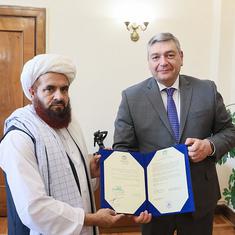The defining feature of the political struggle in Nepal has always been the marginalised groups’ fight to change the character and structures of the state, which are designed to favour high caste men. These men, who comprise less than a third of population, have monopolised power to rule over a diverse country, on the back of security forces, for two and a half centuries.
Such was the resentment of the marginalised – the Dalits, the indigenous, women, Madhesis and the poorest – against the centralisation of power that it helped a Maoist rebellion, capitalising on those grievances, spread like wildfire in the late 1990s. For years, Nepal became a war zone with few “rules of war” observed by the warring sides, especially the government forces, until the Maoists laid down arms in 2006. During this time, over 15,000 died. More than 1,300 are still unaccounted for – “disappeared”, mostly at the hands of the then Royal Nepal Army.
When the peace agreement was eventually signed between the Maoist rebels and the government in 2006, they agreed to tackle the chronic sickness at the root of the Nepali state. They made this commitment:
In order to end discriminations based on class, ethnicity, language, gender, culture, religion and region and to address the problems of women, Dalit, indigenous people, ethnic minorities (Janajatis), Terai communities (Madhesis), oppressed, neglected and minority communities and the backward areas by deconstructing the current centralised and unitary structure, the state shall be restructured in an inclusive, democratic and forward looking manner.
Same power structure
How much of this promised “deconstruction” has taken place? Soon after the peace process began, the old constitution was replaced by an interim one, which required proportional representation of the marginalised groups in the parliament and which called for all state organs to be inclusive. Nepal elected a Constituent Assembly that abolished the monarchy which had guaranteed a high caste man at the centre of the centralised and unitary power structure.
But, from the ashes of the old, a new power structure was not born. The first Constituent Assembly expired without framing a constitution in 2012. The Maoists, the indigenous and the Madhesis – then dominant in the Assembly, now a minority – wanted to federate the country along identity lines, taking into consideration the homelands of the indigenous and the marginalised, their language and their culture. This was rejected by the Nepali Congress and its communist-in-name ally, the Communist Party of Nepal–Unified Marxist Leninist. It was a victory of high-caste politics over the outsiders in the power structure.
The Maoists and Madhesis lost the elections for the second Constituent Assembly in 2013, and today, if all goes according to the major parties’ plans, Nepal will have a new constitution by September. This comes with a federal structure that divides the country into six states but with little autonomy, and no consideration to the homelands of the indigenous groups such as Tharu, Magars, Rais, Gurungs, and Limbus, and marginalised territories such as Karnali. As for the task of restructuring the state to make it more inclusive, the new constitution is unlikely to give political power to the excluded, except in a southern state comprising mostly of Madhesis.
Ominous signals
No wonder, then, that Nepal is once again engulfed in protests from the marginalised seeking greater space in the power structure. But the political winds do not favour them. The Maoists in the Constituent Assembly have capitulated to the status quo, and the prevailing mantra has gone from the liberation of the oppressed to “take what you can get”, whether it is in the constitution or the spoils of power.
The signals are ominous. Constitutional commitment to inclusion is ignored by the government and the Supreme Court, a bastion of conservatism (when the Judicial Council appointed 60 judges in July, it included no Dalits, one woman and six indigenous individuals; the rest were high-caste men). The draft constitution denies equal rights to women. The high-caste status quo that never accepted the agenda of inclusive democracy is unitedly throwing its might around, while change-seekers bicker in one hundred camps.
In Kathmandu, during demonstrations, menacing forces led by convicted politicians dancing with swords to rally for a Hindu state get police protection, while Dalits asking for rights get beaten up. The government is increasingly willing to use force to quell dissent – Dalits, Madhesis, and anti-federalists have been at the receiving end of batons and bullets in recent months.
At the end of the day, power will remain in the hands of high caste men for the foreseeable future. Constitution writing, a task aiming to reach for the highest ideals, has been reduced to petty quarrels over protecting one’s constituency in the next elections by any means necessary, including secretly changing the language of the draft constitution while with the typists. Nepal’s revolution, and the prospects of a liberal beacon emerging in the Himalayas, is over for now.
The writer is co-founder of recordnepal.com.










